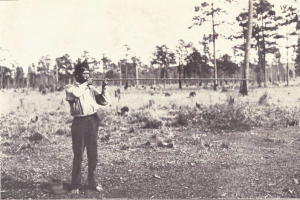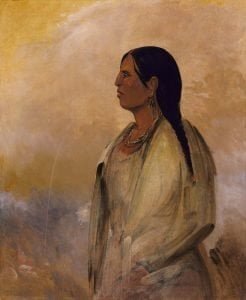Choctaw Games
The Choctaw appear to have had rather few games of chance. Among those described to the writer is one that closely resembles the moccasin game of the Algonquian and other widely separated tribes in America. This is said to have been played by the “old people” and is probably one of the oldest Choctaw games. It was described thus: Lake’lomi Twelve men were required in playing this game. They knelt or sat on the ground in two rows, or sides,” facing each other, six players in each row. Seven hats were placed on the ground in a line between the … Read more


